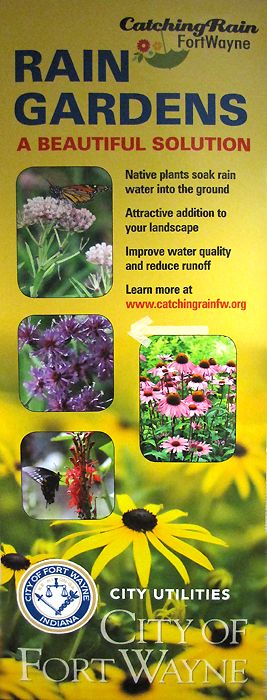
This was just one of a series of workshops the city is administering in response to their 2008 violation of the Clean Water Act. They were given the option of paying a fine, or to put that money into a program of educating the public about the importance of controlling runoff and encouraging them to build rain gardens.
In a city, runoff is a problem due to the absence of ground for rain to soak into. Though storm sewers are incorporated into the infrastructure, it's many times not enough, as evidenced by areas of flooding in streets and parking lots as well as private residences. Pollutants in the air and on surfaces become incorporated into this runoff which then goes into the rivers.
We were given a manual which explains in detail what a rain garden is, why it's important, and how to make one. The morning was spent having this demonstrated to us by Annie Stoffel from Earth Source and Aaron Hutton from Malcolm Pirnie. During breaks, they answered questions from homeowners and helped them design their rain gardens.
Annie Stoffel, from Earth Source, explains how to create a rain garden.
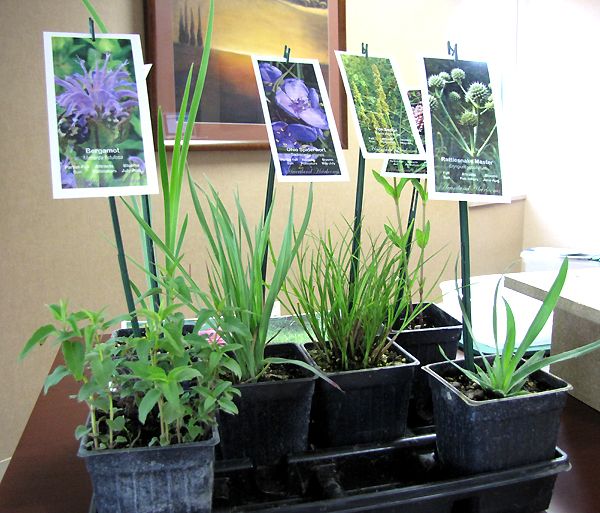 The city of Fort Wayne provides incentives for those who create a rain garden. Homeowners have a choice of getting their plants at a 50% savings, up to $250, as long as they choose from a specified list, or they can choose to be paid $1 per square foot of rain garden up to $150.
The city of Fort Wayne provides incentives for those who create a rain garden. Homeowners have a choice of getting their plants at a 50% savings, up to $250, as long as they choose from a specified list, or they can choose to be paid $1 per square foot of rain garden up to $150.Attending the workshops is generally limited to residents of the city of Ft. Wayne, but because I was there in a media capacity, I was allowed to attend. I'm so glad. I found it to be well thought out and incredibly interesting. I'm sure I'll make use of some of what I learned in my own garden.
Actually I already have.
A couple of springs ago, I finally got tired of the water laying in the path between the trellis and the neighbor's hedge. When it would fill up after a rain, it would overflow into the trellis garden and plants ended up floating. So I dug out the low area a little more, laid down a layer of stone and inlaid stepping stones. What this did was create a deeper trough for the water to lay until the ground could absorb it, which prevented overflow into the garden. The stones allowed us to walk through the area, even when it held water, which eventually soaked into the ground.
A rain garden serves much the same purpose, except that plants are used that thrive in wet conditions. These plants use up a lot of the water, plus their roots aerate the soil, allowing it to absorb rain water better.
For more information on Ft. Wayne's Catching Rain program, visit their website at http://catchingrainfw.org/ .










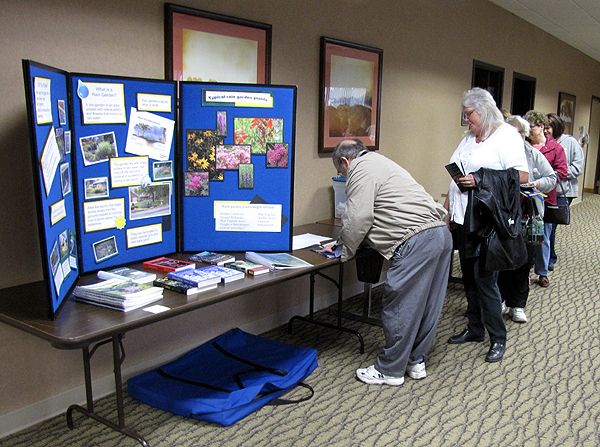
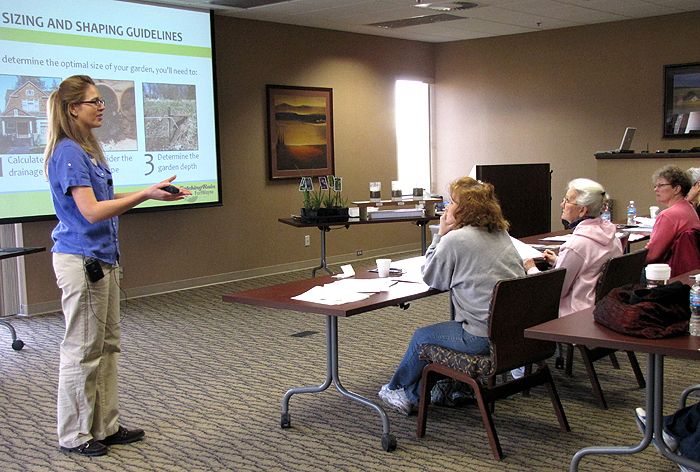
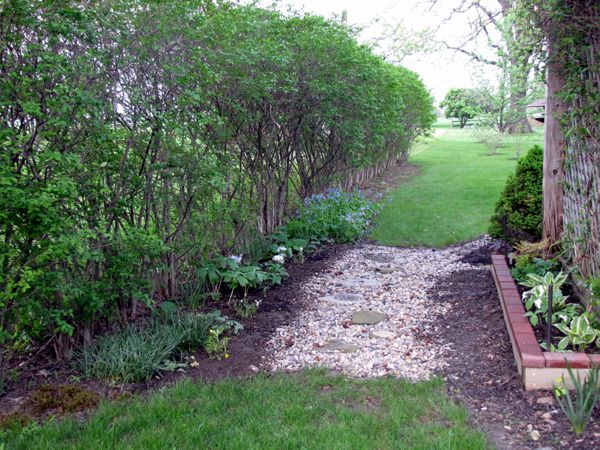






 "Bejeweled"
"Bejeweled"



10 comments:
You get a small credit on your water bill if you have a rain garden in Ann Arbor. I don't officially have one, but I do have two rain barrels that I made and I use very little excess water in my garden. And, you remind me, I've been meaning to blog about a green roof I helped install... in May, 2008! Oops. I admire frequent bloggers, I really do. :)
wow, those are great incentives! i wish we did something like that here in Texas. you'd think we would with the dwindling native plants and butterflies ... thanks for sharing the link, i'll definitely go by there to find more info.
My BIL lives in AnnArbor, they have a neighbor that has a rain garden and they even have a little sign to state that is what it is. This person lives on a hilly lot and I have always wanted to stop and take a closer look. Maybe next time I am there I will.
Monica ~ We have one rain barrel, but I only use that for things that are close to it. Yes, blog about that roof! I've got things that I've been meaning to blog about, too, such as our 2009 visit to Cantigney Gardens in Chicago.
Joseph ~ In this case, it isn't really about attracting butterflies or growing native plants, but they do advocate that. Whatever the reason, it's all good!
Lisa ~ Fort Wayne has signs for the homeowner, too. You should stop, then blog about it!
I just learned about these too! They're fascinating and I'm sad to say I'd never heard of them before.
Now, I'm trying to figure out how to add one to my tiny garden. Thanks for reminding me. ;)
We capture rain water to use with our carnivorous plants (they are sensitive to our tap water, even though we have good drinking water here in San Francisco). I am still not certain it is legal to keep what we caught as some drought states have made it illegal to capture and store rainwater. Matti
To bad your city violated the CWA to begin with, but at least they're makin up for it. I'm curious as to the violations?
I always wondered about rain gardens. I probably could use one here, but concerned that I would actually be producing a conduit for more water at our foundation. right now I am happy with the rain barrel, and might utilize that idea at another corner with lots of water runoff
Kylee, did they talk about technical assistance or a personal rain garden coach? They have contracted with me to provide this service for those who have attended the workshop but still have questions. I am excited about the opportunity. I haven't been called upon yet to provide any services but expect I will be busy in a few weeks. I'm on the board of the St. Joseph River Watershed Initiative whose sole purpose is to improve water quality, so this is part of my passion.
Angela ~ Good luck with your rain garden!
Matti ~ That's a little hard for me to wrap my head around, but I don't live in an area where lack of water is a problem.
Terry ~ Ft. Wayne isn't my city (I'm in Ohio and out in the boonies), but it's the nearest large city, 30 miles away. I don't know what the exact violations were, other than the level of pollutants in the rivers was too high.
Ilona ~ They made a point of stressing that rain gardens must be placed 10-20 feet away from foundations and basements.
Earth Girl ~ Yes, they did talk about technical assistance and had a separate visual in the Power Point presentation for it. I'm kind of surprised that you haven't gotten any calls! People were very engaged in the presentation and planning when we had breaks.
I'll be writing my article for Indiana Gardener this weekend. I might have some questions for you!
Post a Comment